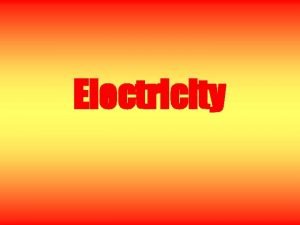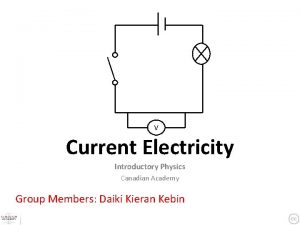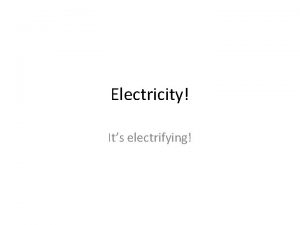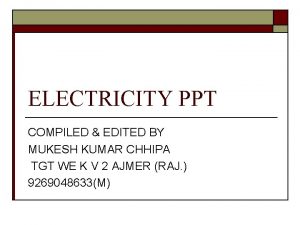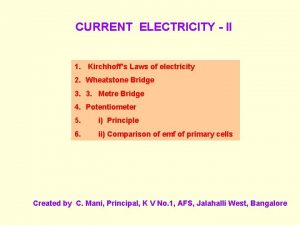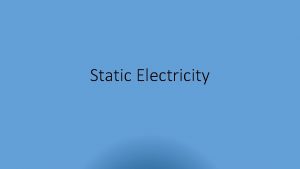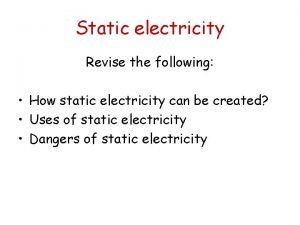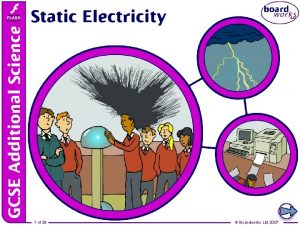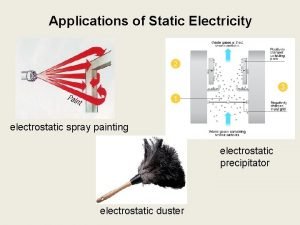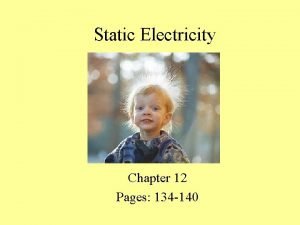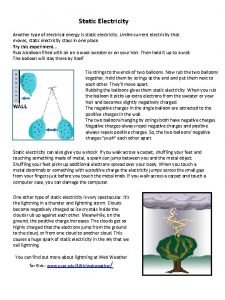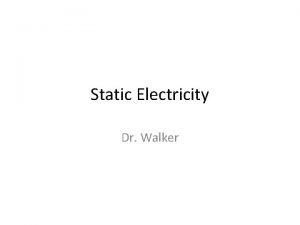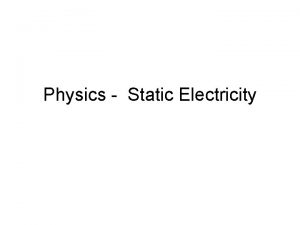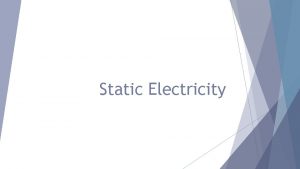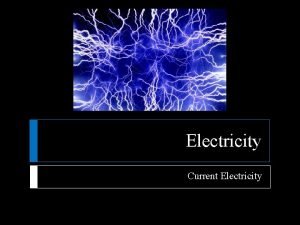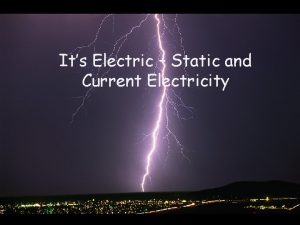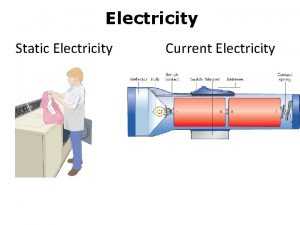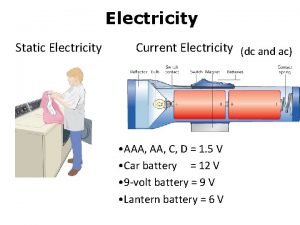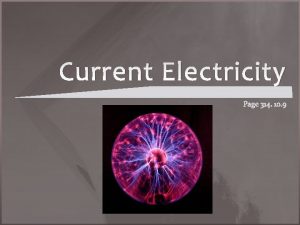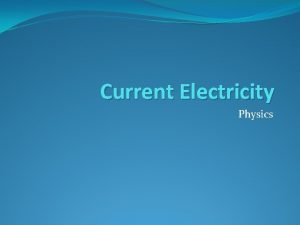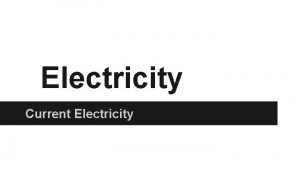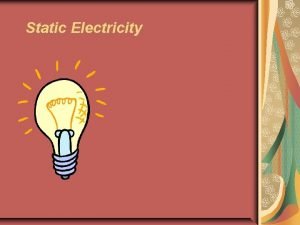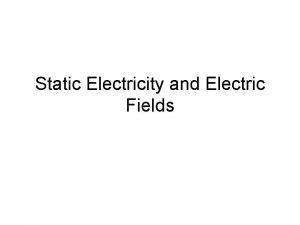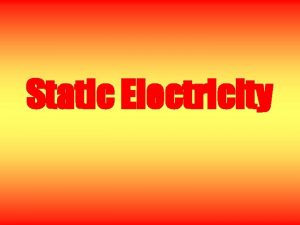Current Electricity Static vs Current Static electricity happens


















- Slides: 18

Current Electricity

Static vs Current Static electricity happens when charges build up on an object Current electricity is what happens when charges continually flow in a path through a conductor

AC and DC Current Alternating Current Direct Current Electron flow Alternating in direction One direction Source Generators Batteries Where Found Wall outlet Portable devices Direct Current (DC) has the electrons flowing one way Alternating current (AC) has the electrons reversing the direction of their flow

Charge Symbol: Q Unit: Coulomb (C) Charge of an object or circuit, the electrons carry the charge, each electron carries a charge of 1. 6 x 10 -19 coulombs

Symbol: I Current Unit: Ampere (A) Is a measure of the rate of electron/charge flow past a point in a circuit Measured with an ammeter (in series, must break the circuit to insert an ammeter) Nelson Science Perspectives 9, 2010

Safety with Current A large current can damage electrical devices or cause a potential fire. Home are equipped with circuit breakers or fuses to protect against fire. Breakers or fuses are connected in series with the load using the current. Newer homes have circuit breakers.

Fuses Contains a wire that melts if the current exceeds a certain limit, thus opening the circuit. A fuse is disposable and must be replaced when it is melted or ‘blown’.

Breakers A circuit breaker is a switch which will flip open when too much current is detected. Just flip the breaker switch to reset the circuit.

Coulomb’s Law Current = Charge/Time I = Q/t Where: I = Electric Current (in amperes –A ) Q = Charge (in coulombs – C) t = Time (in seconds – s) Nelson Science Perspectives 9, 2010

What will happen in current electricity if there is a break in the path of flow? The electrons/charges simply will not flow is there is no complete path Think of those Christmas lights which don’t work when ONE bulb burns out!

Example 1 1) If 350 C of charge pass a point in a conductor in 5. 0 min, what is the current through the conductor? (WATCH UNITS!!!!)

Example 2 7) If there is a current of 0. 5 amperes in a circuit for 1. 0 hr, what quantity of electric charge flowed through the circuit?

How Electrons Move Need a source of electrical energy Battery Wall outlet Electrical energy is directly related to potential difference (the voltage) of the source that will move the electrons Nelson Science Perspectives 9, 2010

Electric Potential Difference Symbol: V Unit: Voltage Difference in electric potential energy per unit charge between two points Electrons flow from higher to lower electric potential Measured with a voltmeter (in parallel, don’t need to break the circuit to measure with a voltmeter)

Electric Potential compared to a water pump

Water moves from high to low pressure from the water pump, or a natural waterfalls from high to low ground, and water can do work while this happens The same thing happens with electrons, they flow from a high potential difference to a low potential difference, doing work through a load along their way

Calculating Electric Potential Difference Potential difference = Energy/charge V = E/Q Where: V = potential difference (in volts – V)) Q = Charge (in coulombs – C) E = energy (in joules – J)

Example 3 5) What is the charge on the negative terminal if the chemical energy of a battery is 60 J and the potential difference between the two terminals is 5 V?
 How are static electricity and current electricity alike
How are static electricity and current electricity alike Static electricity and current electricity
Static electricity and current electricity Current electricity gif
Current electricity gif Difference between charge and electric charge
Difference between charge and electric charge Venn diagram series and parallel circuits
Venn diagram series and parallel circuits Kinds of electricity
Kinds of electricity What is current electricity in physics
What is current electricity in physics Current electricity def
Current electricity def Current electricity ppt
Current electricity ppt Bill nye static electricity
Bill nye static electricity Current electricity
Current electricity Static electricity examples
Static electricity examples Static electricity painting
Static electricity painting U in electricity
U in electricity Static electricity summary
Static electricity summary How is static electricity used in spray painting
How is static electricity used in spray painting Static electricity by calamityofcolors
Static electricity by calamityofcolors Static electricity one cloud to another
Static electricity one cloud to another Which is greater
Which is greater





